Shelby Tuned: A Motor City Dodge Omni
I AM THE SPEEDHUNTER
- Words
- Dave Thomas
- Images
- Alan Macey
25th January 2018 3 Comments
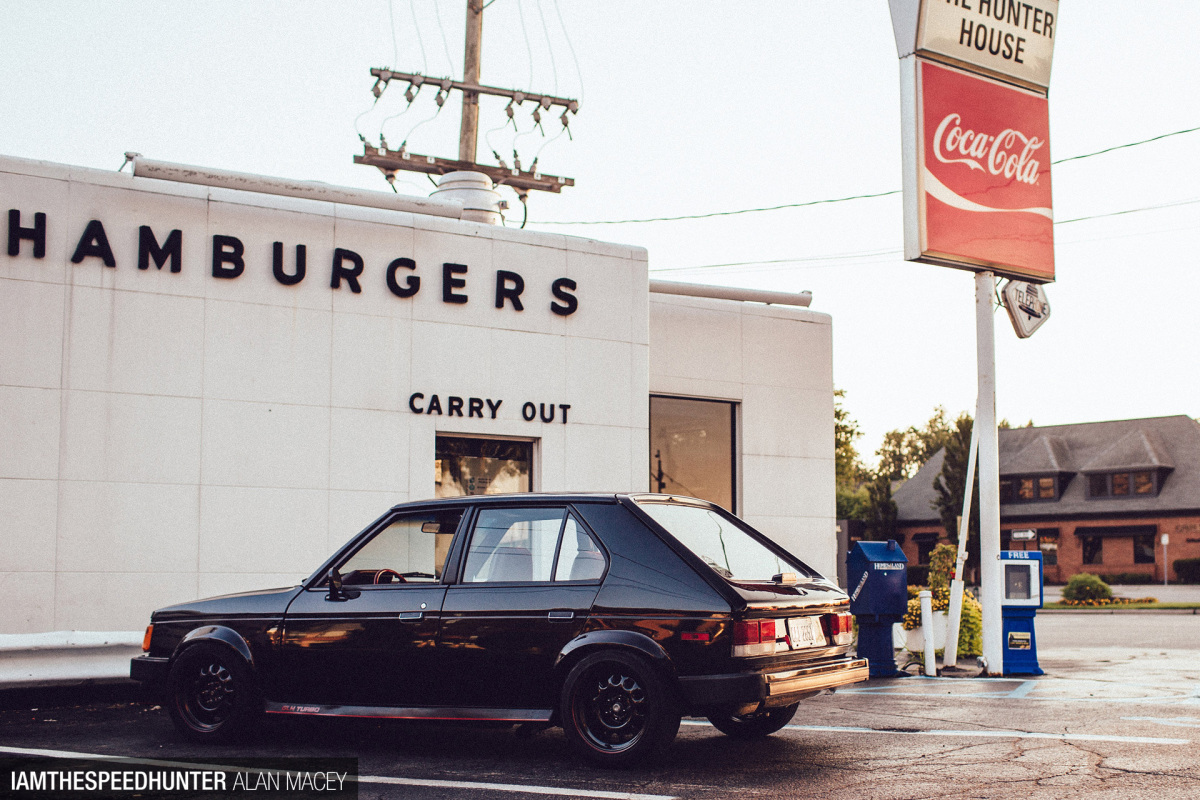

You can often tell just how far off the deep end someone is in this car hobby by the platform they choose. Not to offend those with more common platforms – I myself own two extremely common vehicles; an ’09 Speed3 and a ’51 GMC pickup – but it’s easier to be an enthusiast of a popular platform than it is a an unpopular one.
For example, if you’re a Camaro owner, chances are pretty good that at any weekly meet you’re going to find a fellow Camaro driver to converse with. Or, if you own a Civic you can take advantage of the limitless wealth of information available for darn near any modification you may want to perform.
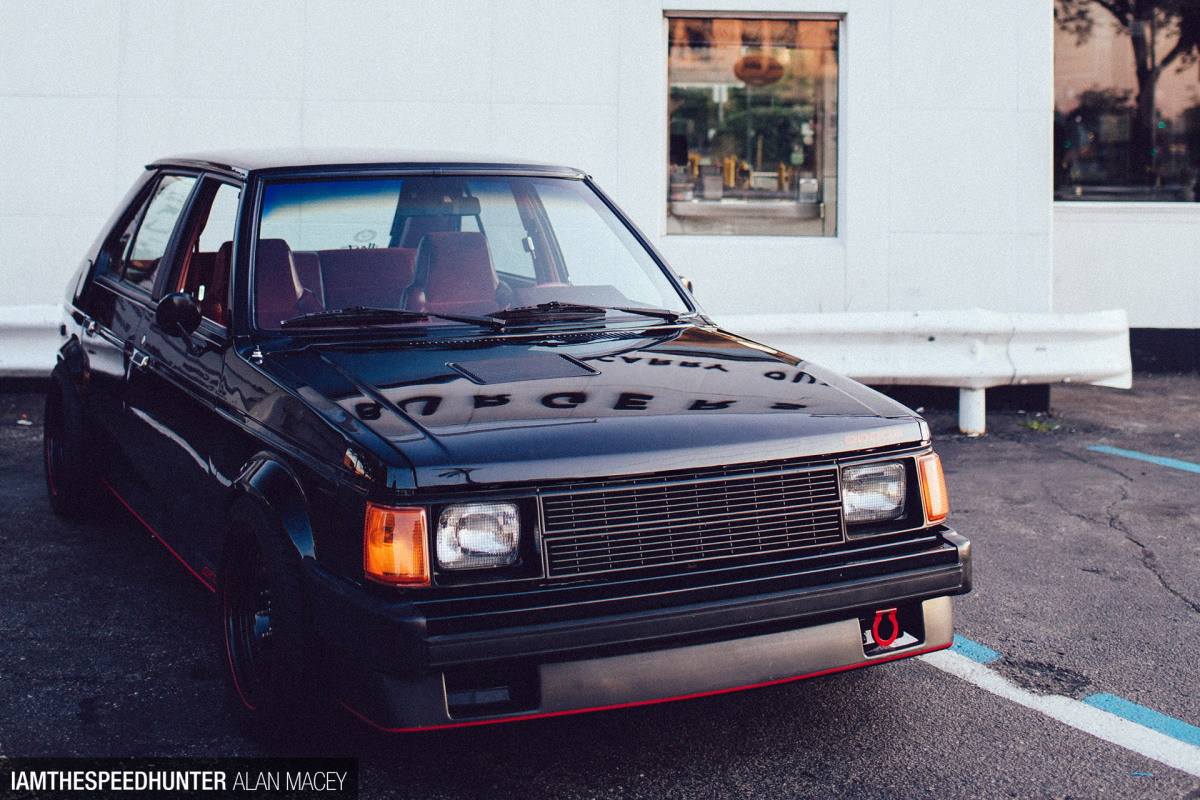
Other cars, due to limited production runs, build quality, or general obscurity in your area of locale are, by nature, both harder to own and modify. Taking those cars off the beaten path is either for the adventurous, or glutton for punishment. Turbo Dodges probably fall closer to the later than the former.
SRT4 owners put down your pitchforks, I’m not talking about you; I’m talking about the era before you. The era when turbos could be found under the hood of the most unlikely of Dodge platforms.
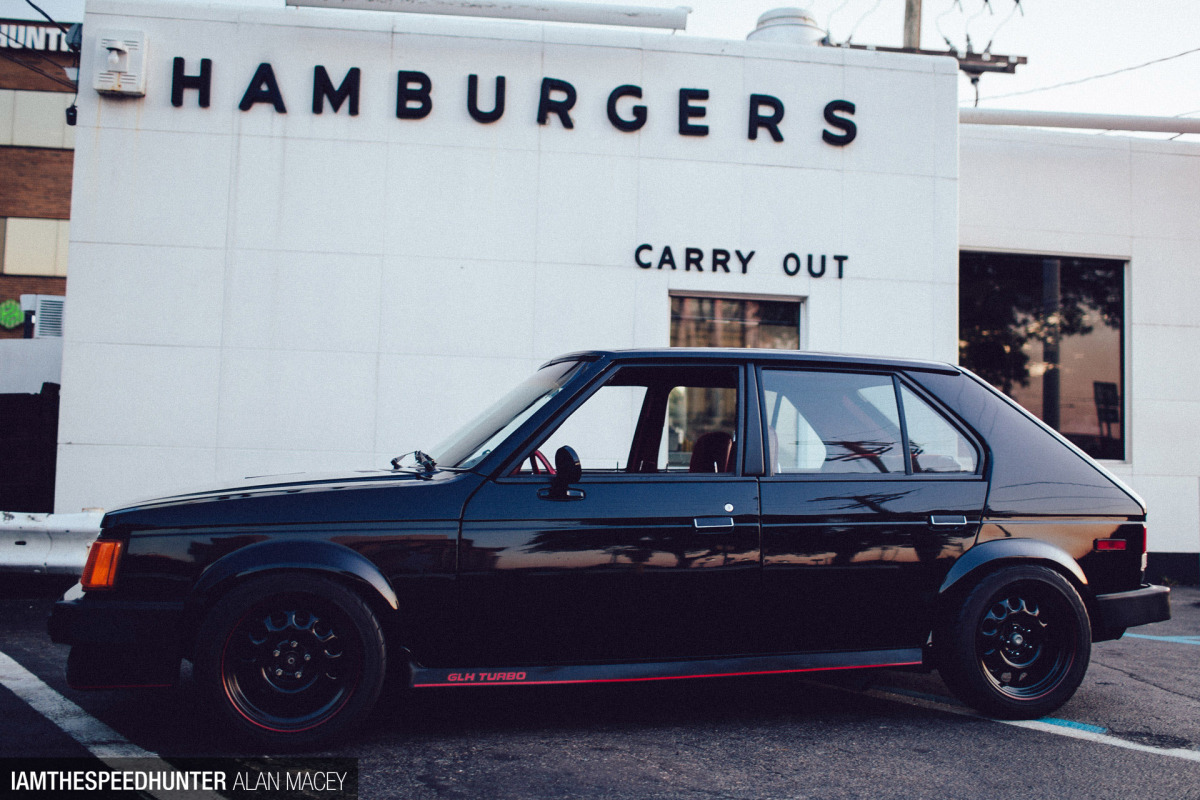
For those who were not around in the ’80s, long before its supercharged Hellcats scorched the earth, Dodge wasn’t afraid to toss a snail at virtually anything in its line up. The strangest two platforms were the second generation ‘luxury’ convertible known as the Lebaron and the antithesis of every enthusiast, the Dodge Caravan.
During its turbo heyday, Dodge also saw fit to put a turbo under the hood of its four-door hatch called the Omni. The Omni was designed as Dodge’s answer to both European and Japanese imports, created to compete directly with the Honda Civic and Volkswagen Rabbit.
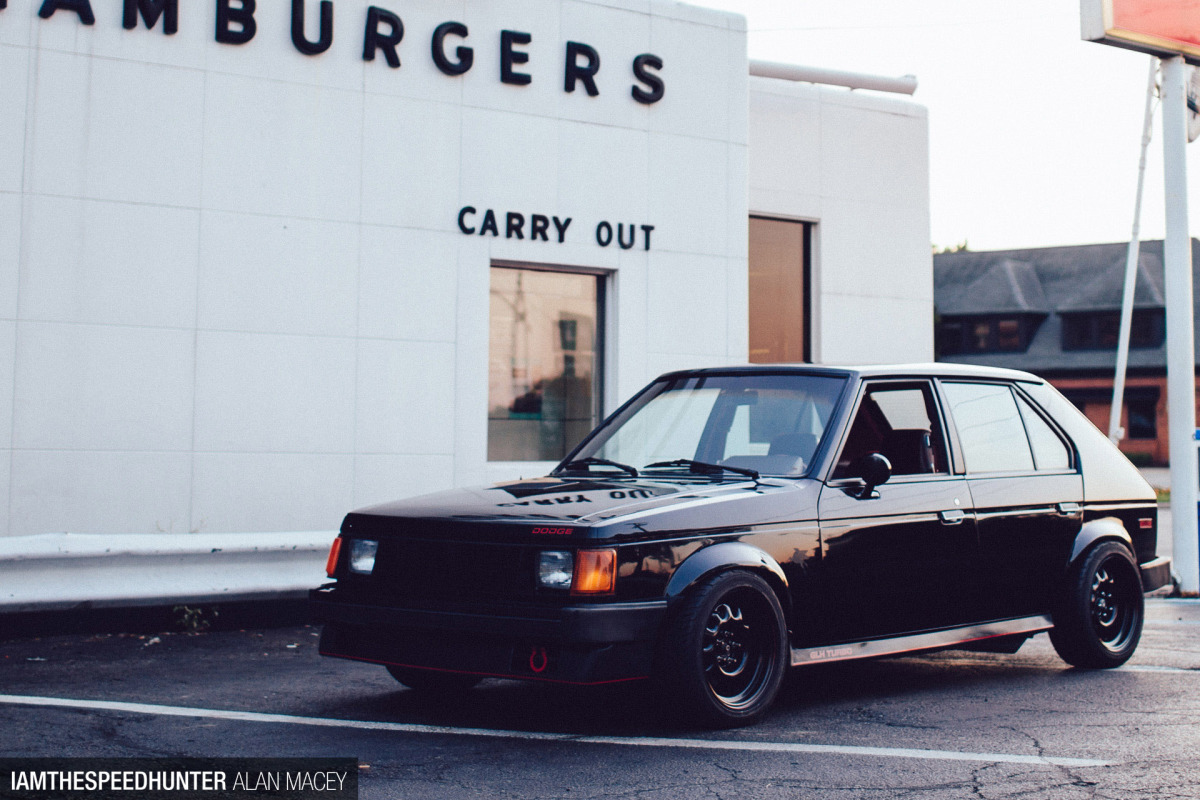
Depending on the year and trim, the standard Omni was fit with a 1.6L, 1.7L, or 2.2L motor that coughed up between 68 and 77hp. Models with ‘GLH Turbo’ on the side skirts, however, were a different beast altogether.
GLH is an acronym for Goes Like Hell, and the special Omni was an unlikely collaboration with the late Carroll Shelby. Fitted with a Garrett T03 turbocharger from the factory, at 7.2psi boost they produced 150hp, which is just over double the Omni’s standard output and nothing to scoff at for a car that could weigh as little as 2,200lbs (998kg).
Omnis, especially GLH models, don’t pop up often. They definitely have a following, but in the eight years I’ve been photographing and writing about cars I can count on one hand the number I’ve seen in running condition. So, looping back to the opening paragraph, when I came across this one, lower and cleaner than any I’ve seen, then or now, I knew it had to be built by a certifiable car nut.
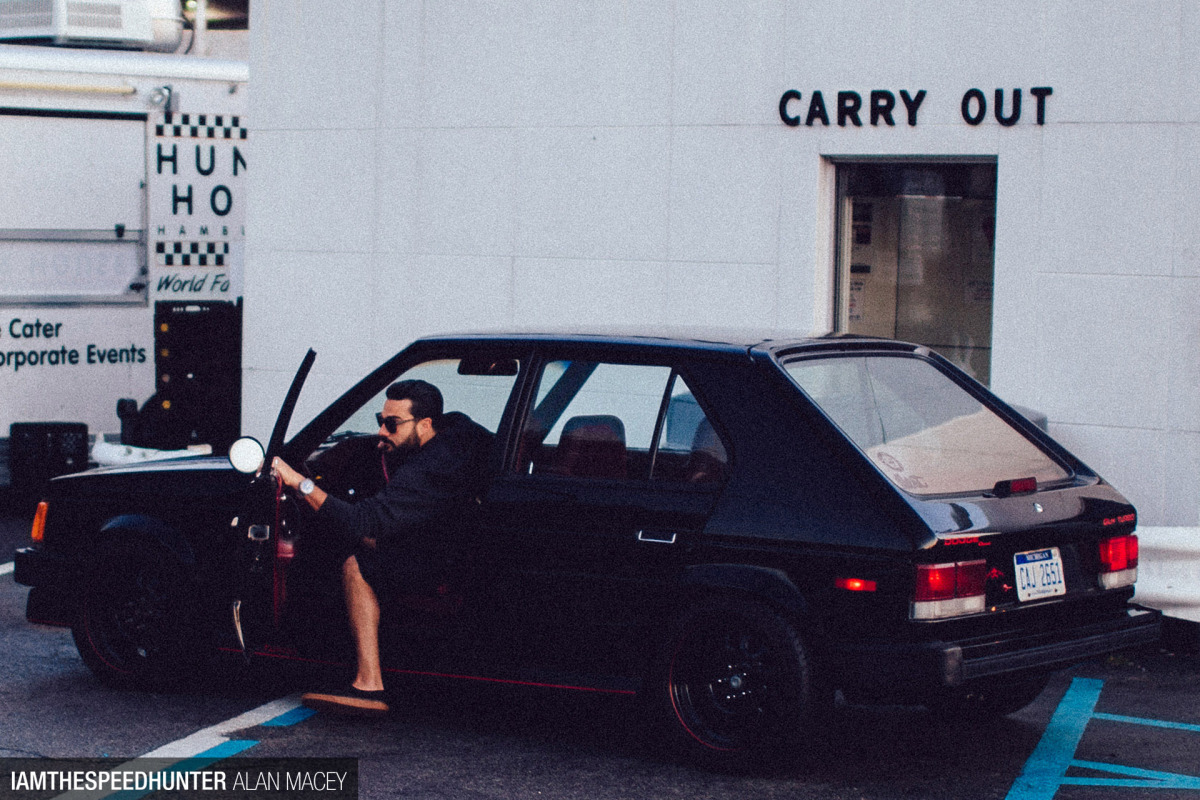
Owner Chris Piscitelli is a Detroit-based automotive artist and designer who currently hangs his hat at Jeep. He’s been featured here on Speedhunters before, and there’s no arguing that he’s a ‘lifer’ when it comes to tinkering with cars.
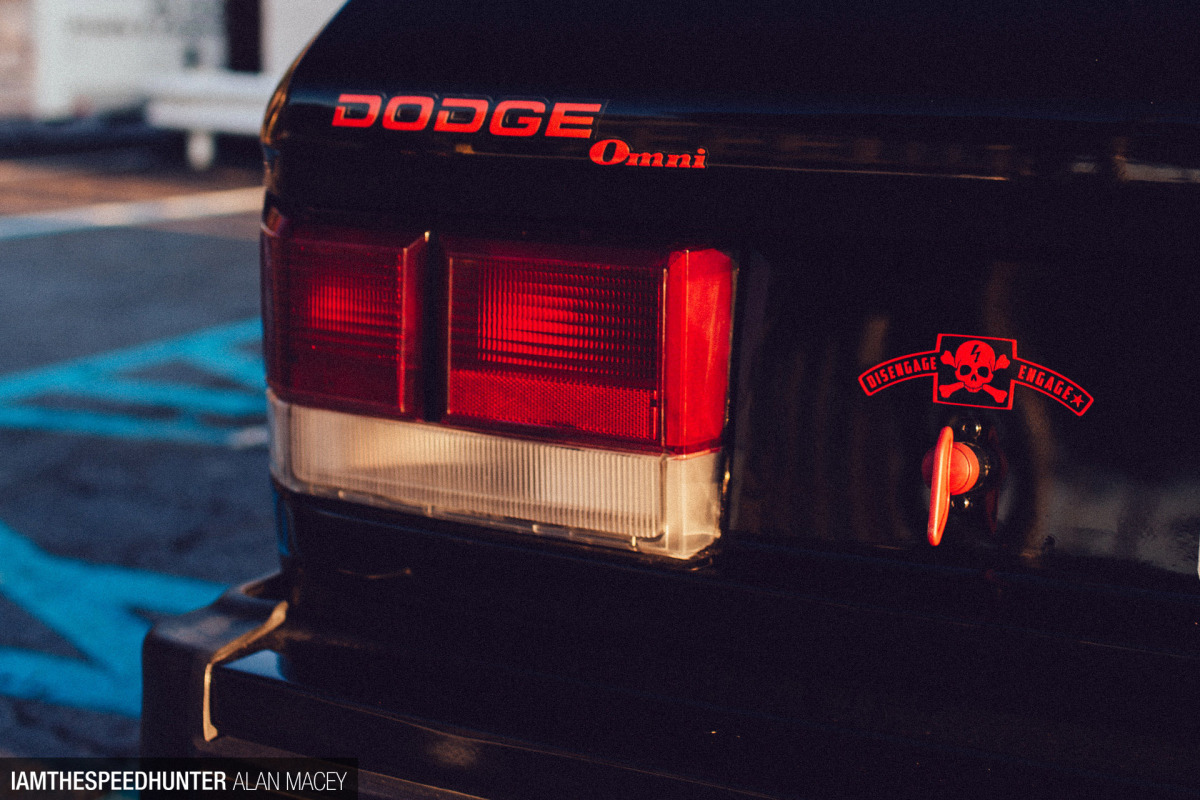
Currently his collection consists of a ‘65 Dart convertible, a ‘68 Imperial Crown Coupe, a ‘54 Plymouth Savoy Coupe, and finally a 1929 Model A Roadster. On top of that his daily is a cammed 454ci V8-powered 1990 Jeep Comanche.
Since I’ve known Chris, at any given time his cache of vehicles is liable to change seemingly on a whim. No doubt thanks to his very understanding wife and the Motor City in which he resides.
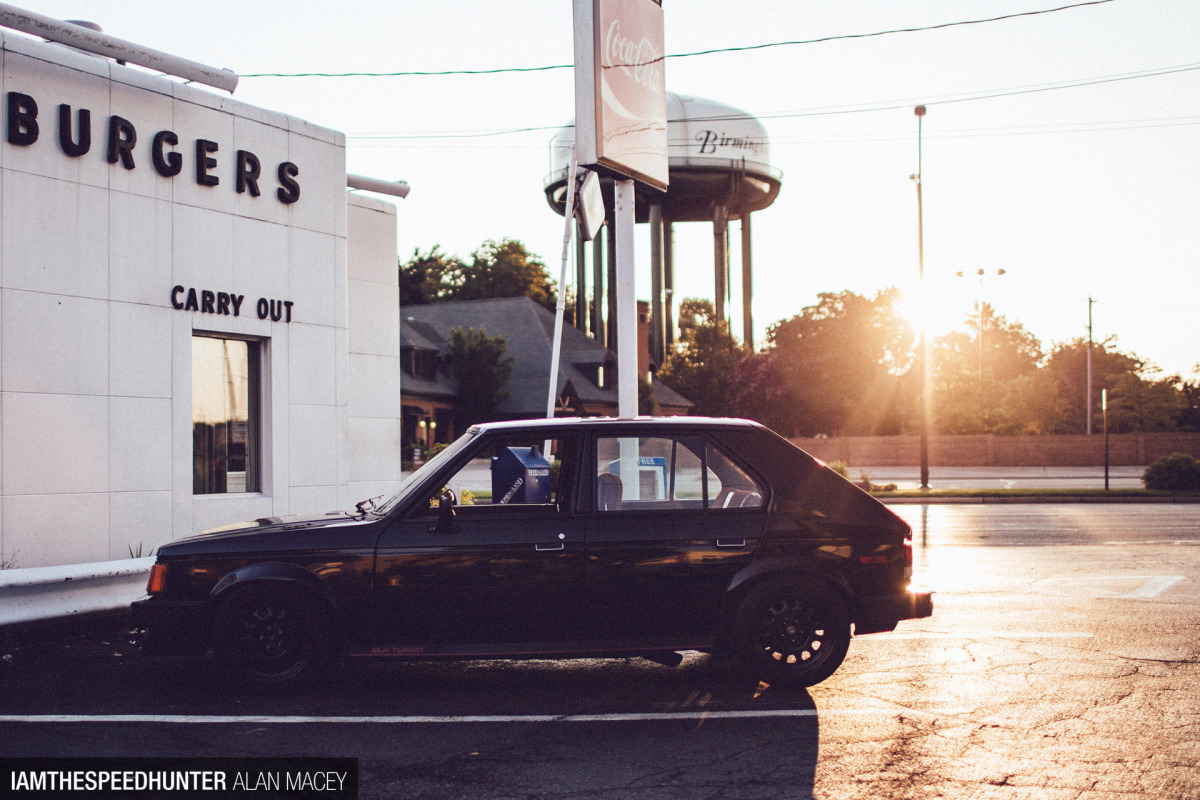
Chris’s story with the Omni starts in 2004 as a broke college student looking for something to go from point A to point B in the winter months. The Omni was selected because it was a little different than a Golf, but offered up similar amounts of fun. Ultimately he settled on an already modified southern example that had seen a guardrail after a lapse in judgement from the previous owner.
The bent bodywork, from fender to quarter, put the car in Chris’s price range, but before he even had the chance to address the roughed-up panels his list of things to fix was compounded by unsuccessfully trying to pilot the car through a flooded viaduct.
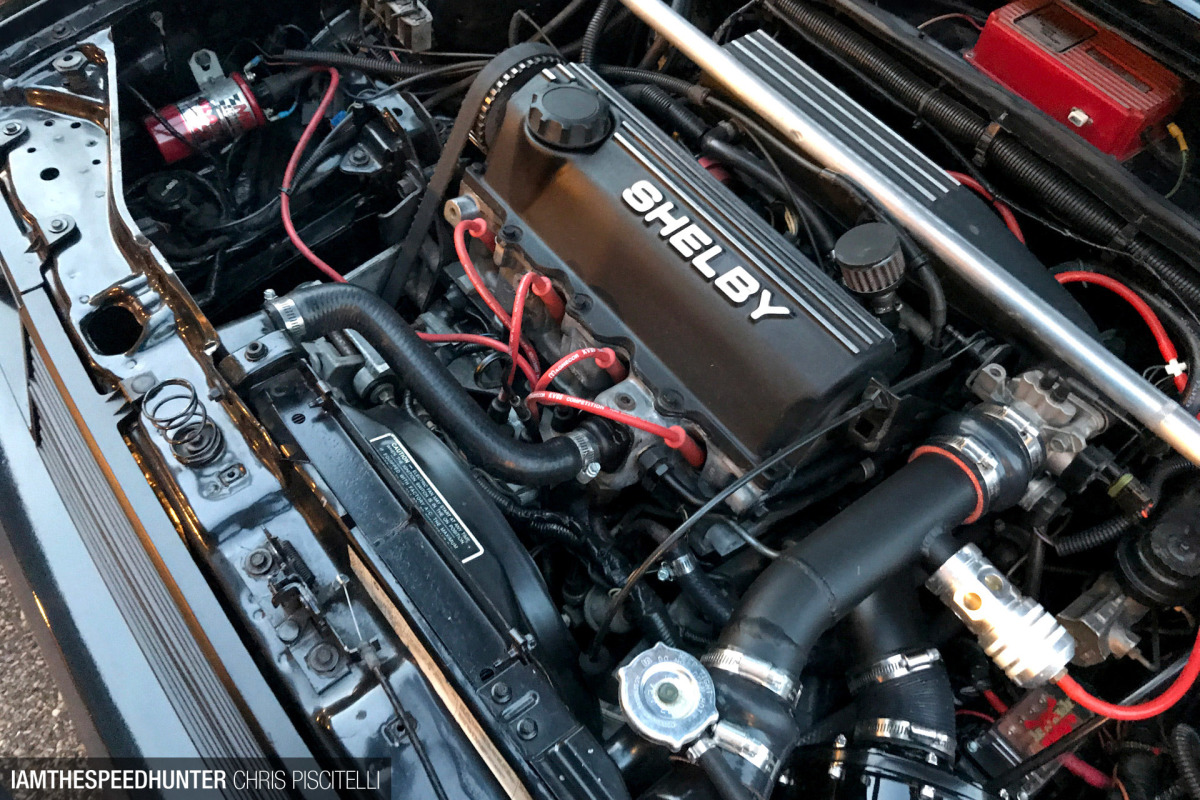
Hydrolocking the motor, and bending a few connecting rods in the process, Chris ended up striking a repair deal that was too good to be true. A fast-talking mechanic promised Chris he could have the car repaired at an affordable price. We’ve all been there – young, broke, in a jam and looking for an affordable out seemingly provided by a mechanic with a smile and firm handshake. Where we have not all been is in the position of having to hunt down said mechanic after they packed up and vanished into the wind. After a few months, and the help of a reverse look up, Chris was able to track down both the mechanic and his beloved Omni.
As you can imagine, little work had been done during the car’s disappearance and Chris had to find a second mechanic to build the motor. Mechanic number two was thankfully a turbo Dodge aficionado, and in short order the motor was brought back to fighting shape with a few improvements. The block is from an ‘89 Shelby Z that was bored .020” over, and it’s been fit with Dodge Turbo II connecting rods and a Super 60 Comp cam. Mopar Performance valve springs, a 85 Mopar G head, and a port-matched Shelby two-piece intake were also installed while the motor was out. Add a new 52mm throttle body to the mix, stout injectors, and a Super 60 intercooler, and the 2.2L ended up putting 284hp and 305ft-lb to the wheels through a cable-shifted Getrag A-555 transmission.
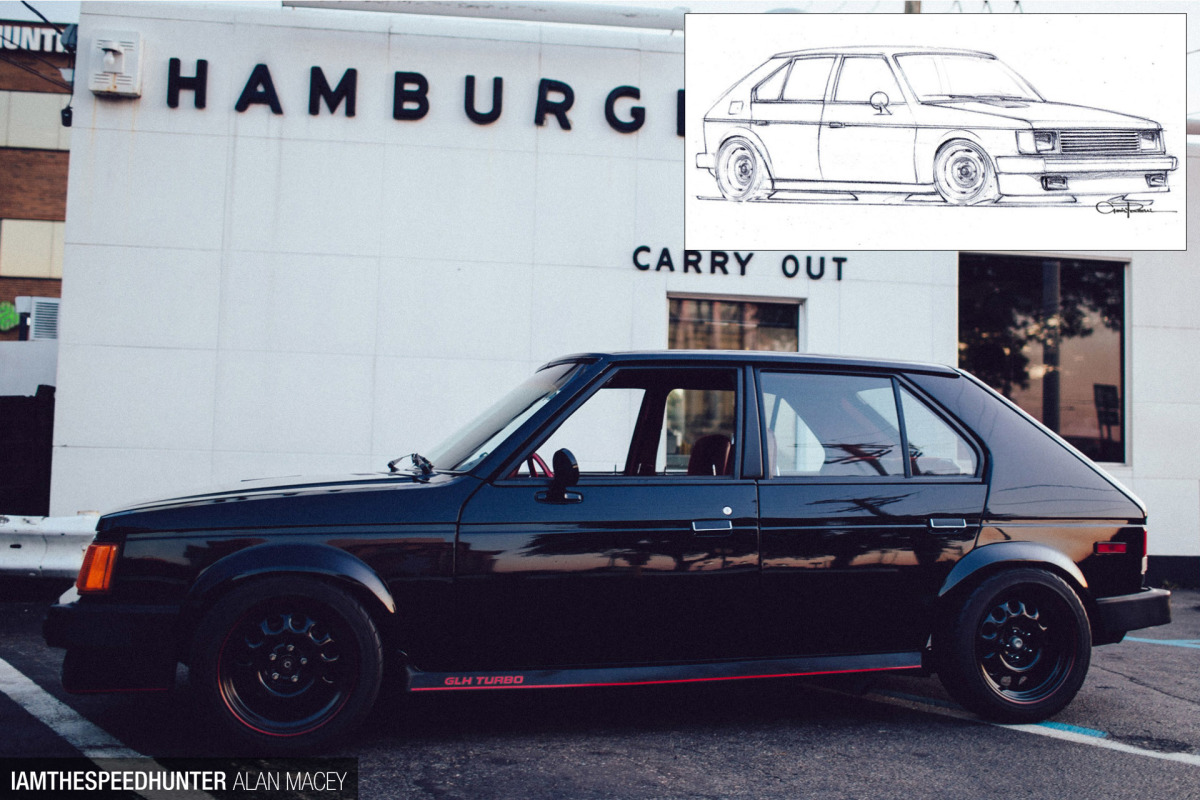
After the car was running around under its own power once more, Chris, being an artist remember, sketched his final vision for the car. Going from paper to reality with an a-typical chassis like the I-body is no straightforward task.
Suspension options for the Omni are limited, and with sights set lower than the 1-1.5-inch options available in the aftermarket, Chris had to get creative. The front struts are modified Dodge Neon units, paired with Dodge Daytona knuckles and Mk1 Rabbit Ground Control sleeves. In the rear are stock GLH strut bodies with Mk1 Rabbit Eibach adjustable coils. It almost ironic that the car was set closer to the ground thanks to suspension components from a car it not only resembles, but was designed to compete with.
Chris’s sketch also called for widened steels and the ones on the car are new old stock Volkswagen Corrado units. They’ve been widened by 1-inch in the front and 1.5-inches in the rear. After a very short wheelspin-filled stint on stretched rubber, Chris put a meaty 205/50 tire setup on all four corners. ‘Meaty’ and 205s might seem oxymoronic, but these cars originally rolled on 165-section width tires.
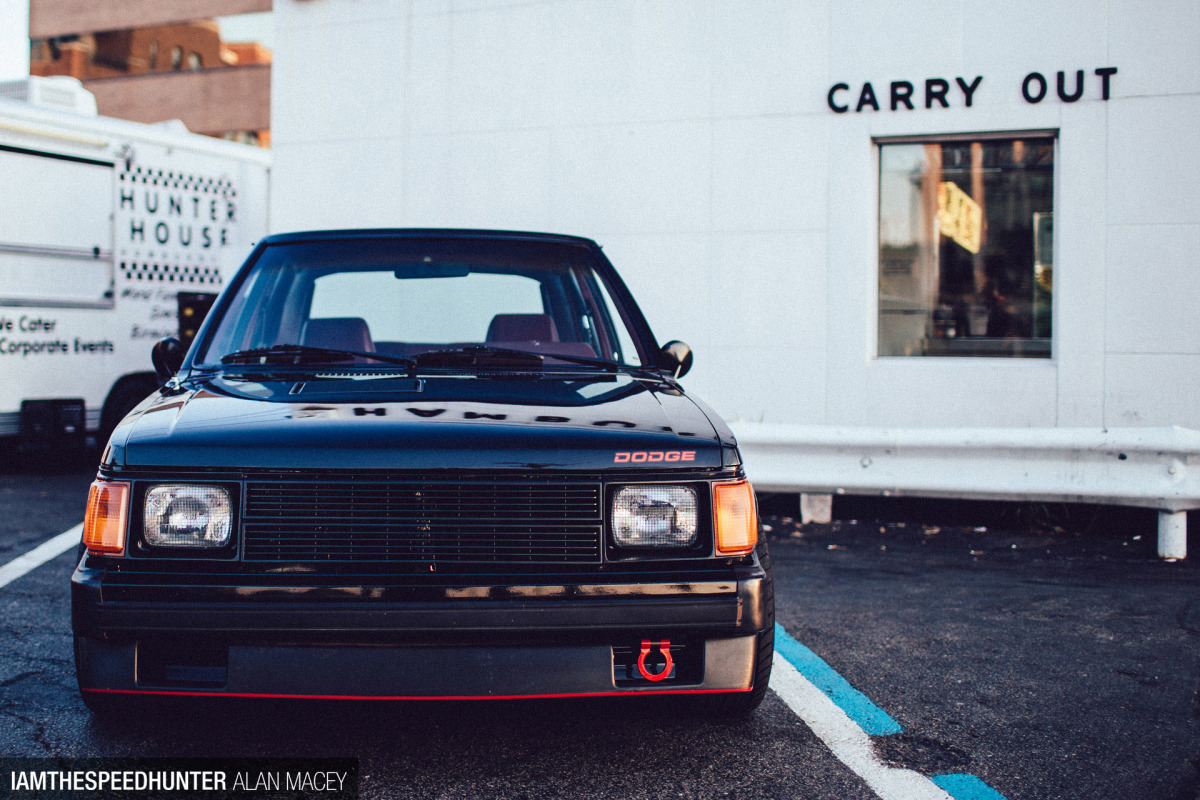
Ride height and wheel tire setup sorted, Chris was finally in good shape to tackle the body. This was easier said than done once he got the panels off the car. The core support and front valance were bent from the car’s time in the ditch, and it had also acquired a hefty number of dings and scratches during its time held hostage. Black, being the hardest color to paint, requires meticulous body work, so the process was arduous.
While the car was being repaired, Chris took the opportunity to make a few subtle exterior modifications. Features were rolled, pulled, tucked, and shaved, including the Pentastar logo from the grill. That little modification actually required cutting up several factory Omni grills to complete. He also gave the bumpers a once-over, tucking them in closer to the body and reshaping the ends.

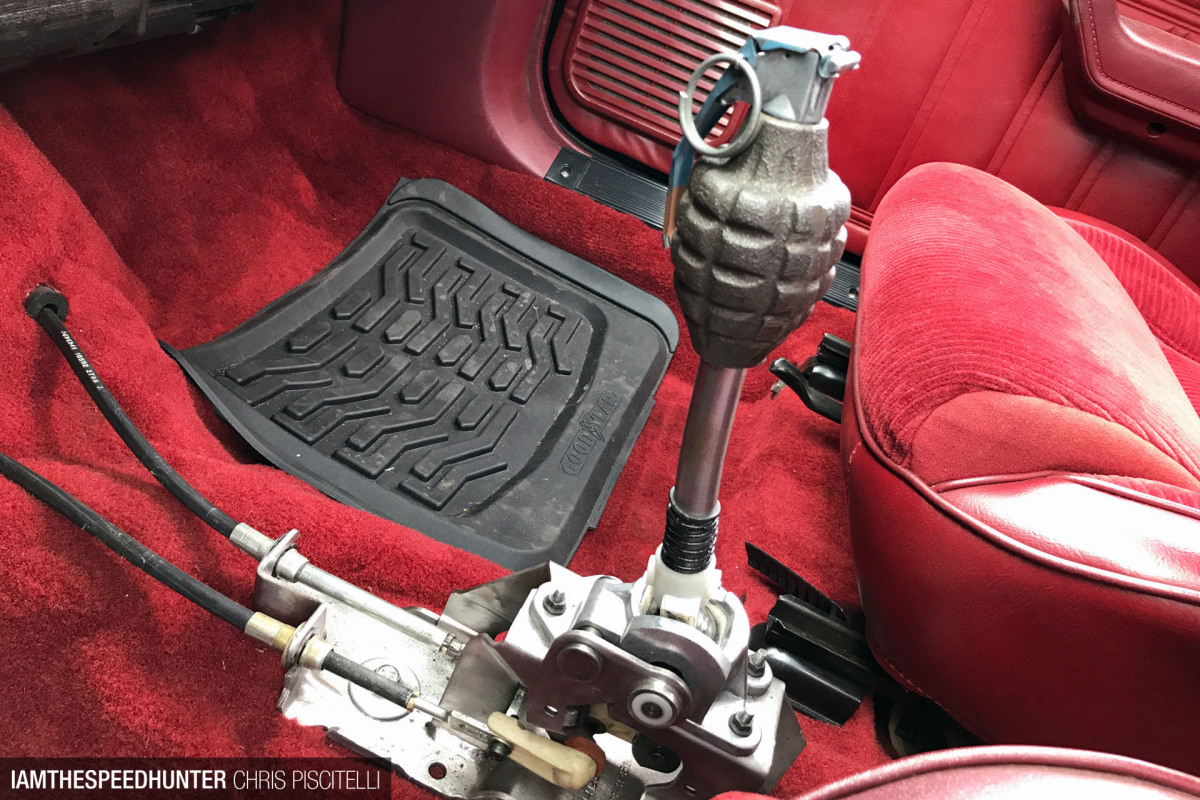
Exterior, check. Suspension, check. Motor, check. The last thing to tackle was the interior.
The first thing of note inside the car is the shift knob, an actual grenade from an army surplus store. Its presence is a bit of an inside joke among Chris and his friends, as shortly after he took possession of the car it was given the name Bombni due its rowdy nature and potential to explode at any given moment. The shift knob calls back to that nickname, and keeping with the attention to detail with this build the pin actuates the reverse lock out.
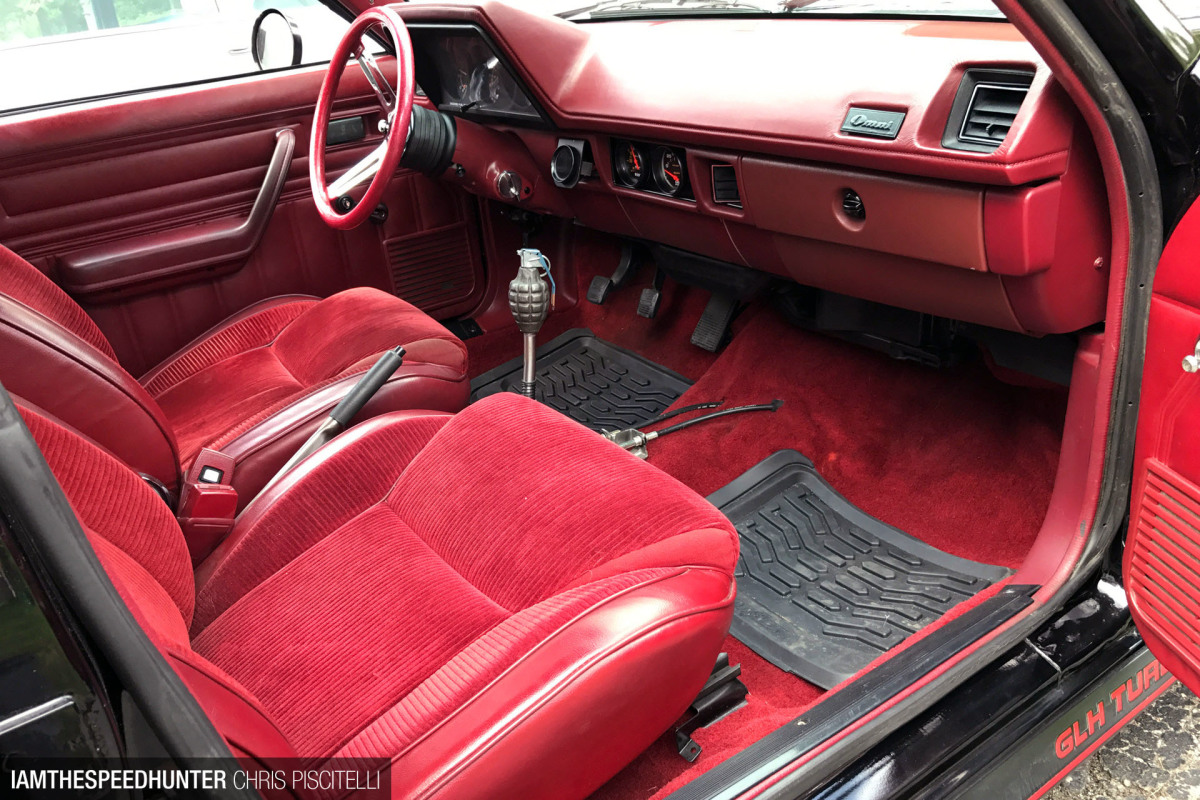
The rest of the interior is flawless factory red couderay that Chris pieced together from a few different cars. A matching reproduction red carpet is coupled with a red flake Mooneyes steering wheel.
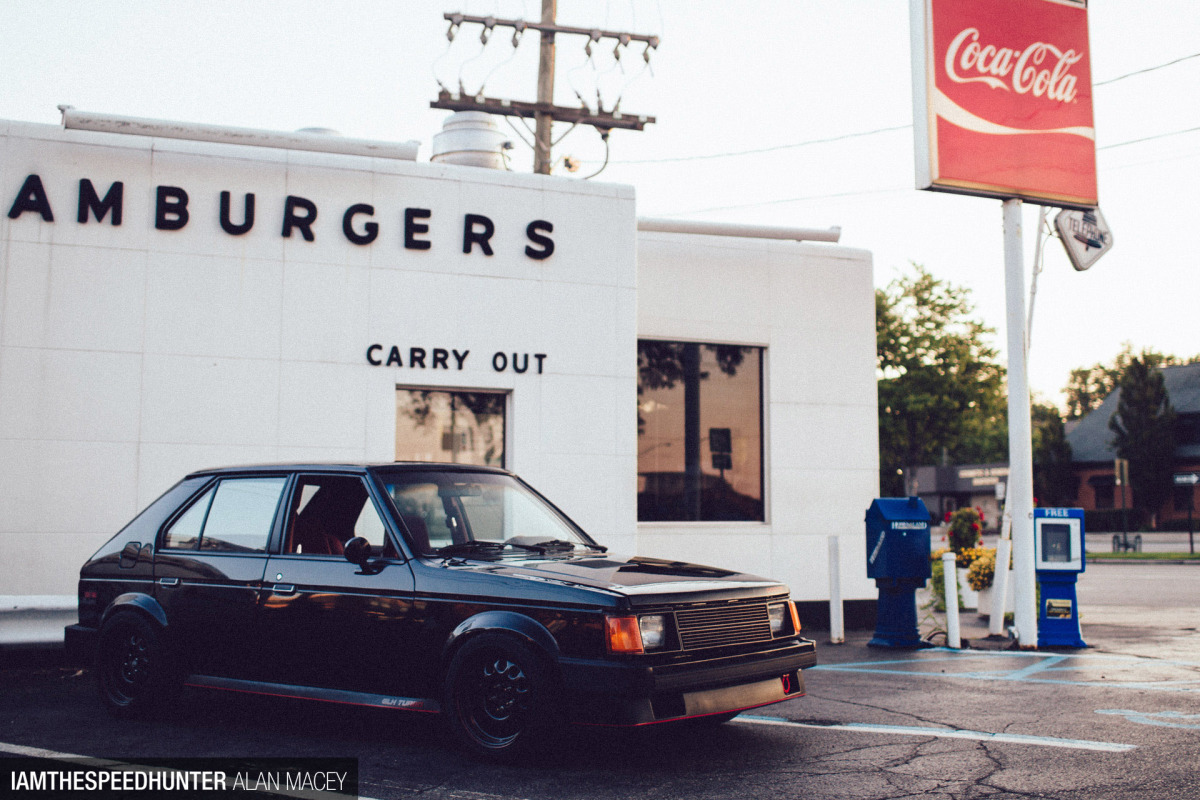
Taking an odd duck like an Omni and building it into a vehicle that ticks the function, form, and comfort boxes collectively is no small task, but Chris managed to pull it off. Personally, I had always assumed after putting up with the car for so long that Chris would own it forever. However, after over a decade of ownership Chris recently posted the Omni on eBay to free up some resources for some of his other projects.
With his attention to detail and proclivity to dive head over heels into a project, it’s safe to say whatever project he sees through to the finish line next will be feature-worthy too. Though perhaps not as quirky as this little Bombni.
Dave Thomas
Instagram: stanceiseverythingcom
Website: stanceiseverything.com
Photos by
Alan Macey
Instagram: curb77
Website: thecurbshop.com
Additional Photos by Chris Piscitelli (Owner)
Instagram: piscitellidesign
Website: piscitellidesign.com